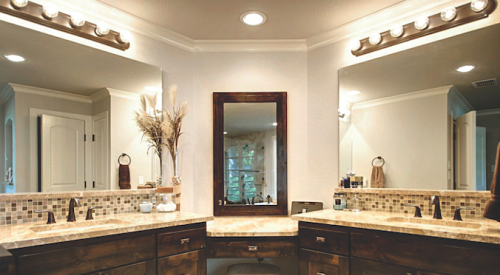| Cydne Combs cydcombs@yahoo.com
|
Being expertly familiar with the competitive new home products in your market enables you to position your offering more accurately within its niche while also strengthening your presentation skills; establishing you as an authority with your builder, customers and competitors; and creating marketing/promotional opportunities.
In-depth information also can make you acutely aware of competitors’ current offerings and promotions. Competition is a good thing, but it's a game of survival out there.
Reconnaissance
In researching your competition, spend time completely familiarizing yourself with the varied offerings in your market. It might not always be possible to secret-shop your competitors, but if the opportunity arises, note first and foremost the knowledge of competing new home sales professionals about product, amenities and community.
|
|||||||||||||||||||||||||||||||||||||||||||||||||||||||||||||||||||||||||||||||||||||||||||||||||||||||||||||||||
Another ideal strategy in this prepara-tory stage is to take your superintendent on visits to the competition. It is critical in this process to have him/her point out important features that your product line has versus those offered by the competition. This helps a sales manager sell the competitive edge.
Take a tape measure to document often-overlooked areas in which your homes might be superior, such as dimensions of master bedroom closets, cabinetry, media centers, front doors, foyers, kitchen desks, etc. Formulate a working spreadsheet as you go - when completed, this information will be used to create a collateral piece that accompanies your new home presentation.
Finally, be sure to obtain several brochures of each competitor for future reference, one of which goes into your office competition binder. Know your competitors' floor plans by name as well as you know your plans. Imagine the credibility you build with prospects/customers by doing your homework to this level.
Strategy
From the compilation of your survey data, organize the amenities for the spreadsheet rough draft in the order of your model home presentation; for example, front yard, entry foyer, living room, kitchen, bedrooms, rear yard, garage, etc. Along the X-axis (from left to right), list community names (starting with yours). The Y-axis (top to bottom) should list amenities (in the order specified above).
You might add a column to the far right for miscellaneous competitive information or observations such as "small master closet in The Oaks' Plan Two" or "interesting community entry approach at The Cottages." Your completed list of amenities can include recreational facilities, transportation options, beneficial tax rate, etc. You should survey all significant competitors in your market.
The final version, a "Dare to Compare"-type collateral piece, is designed to present the exciting features within your community and to be a guideline, or script, for your features presentation. In this way, your amenities come to life. Relevant portions of this grid should be marker-highlighted, and the piece should be handed to prospects only at the end of the presentation to serve as a takeaway reminder of your homes and community.
Execution (or Implementation)
Some versions of this exhibit list a dollar value for primary community amenities, showing a grand total at the bottom, usually in the thousands of dollars. Home buyers today are savvy enough to know that, while the total is an attempt to display value, it nonetheless represents subjective retail pricing, and only a few might be impressed. As tempting as it might be to emphasize the cost of these items, no two prospects value an amenity identically. If the benefit has been presented properly, a discussion of cost is irrelevant.
You've covered a lot of ground in creating your marketing tool, and it has a variety of uses other than that of a simple handout. My comparison checklists have been enlarged, mounted and displayed on an easel in one of the models, and used as a separate direct-mail piece to my database of prospects.
Achieving the Objective In the meaningful two-way dialogue that is the presentation, the top performer has the sole objective of creating value. Your skill in how you reach prospects, where you reach them and where you take them is one of the most critical that you can possess in new home sales. Linking home buyers to their purchase through a stimulating, involved presentation underscores the unmatched value of your homes and positions you as an authority. Be ready.












